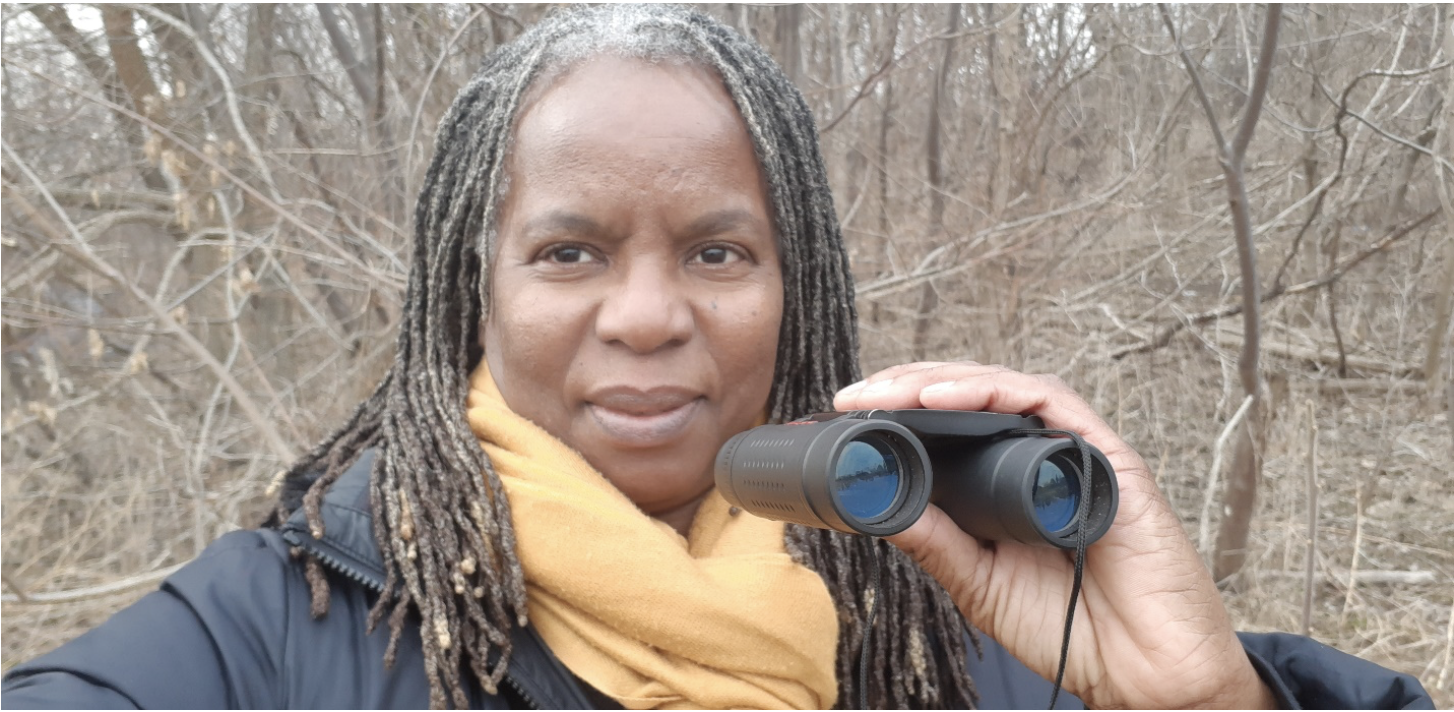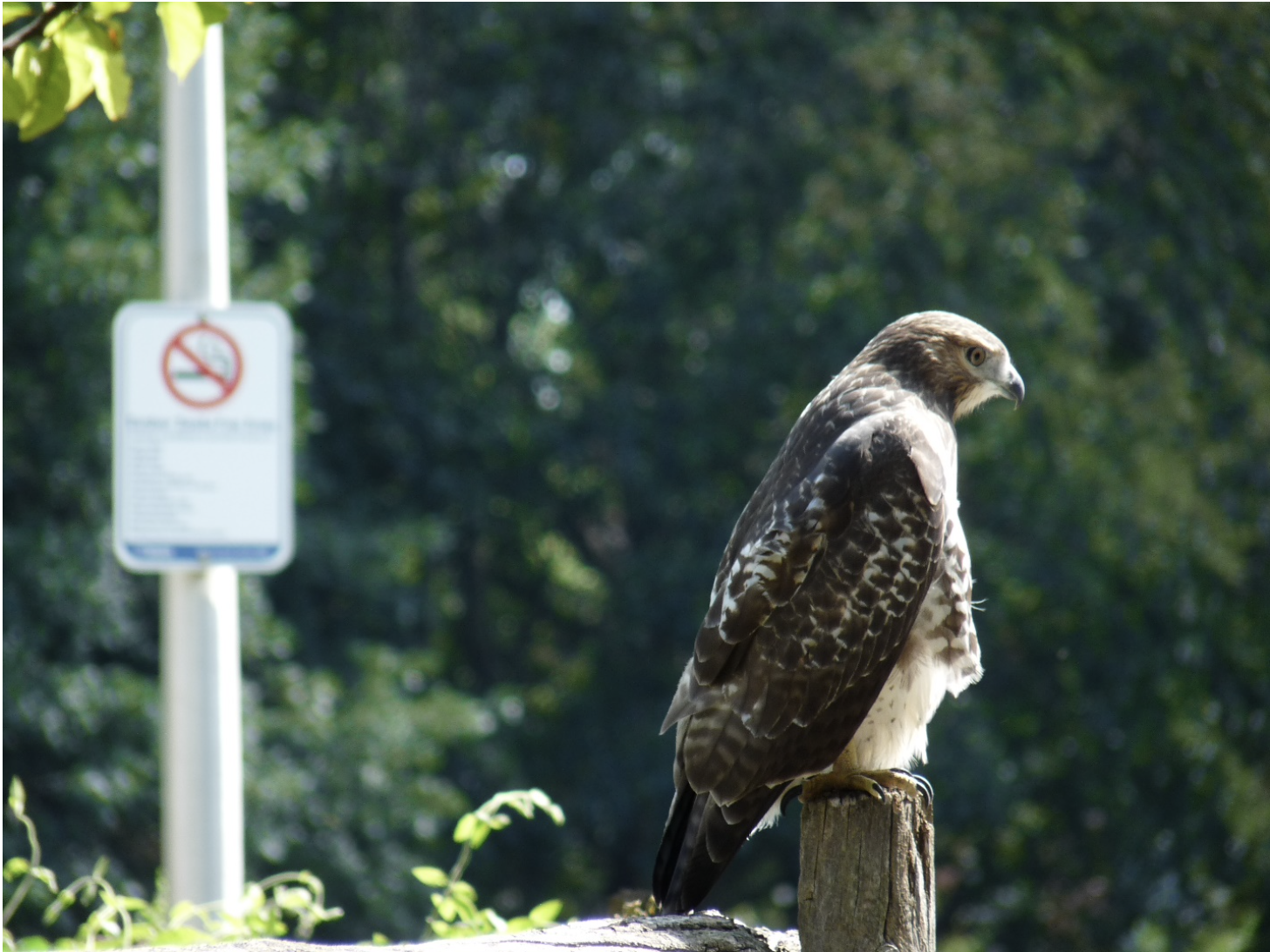Why seeing more bird species makes a happier life
By Jacqueline L. Scott, Safina Center Fellow
The author, birding in Toronto. Photo ©Jacqueline L. Scott
Birds make me happy. There are some 350 species of birds in Toronto, and so far, I have seen over half of them on my walks around the city. There is a link between the variety of birds species and how satisfied people feel with their life. In a nutshell, the more bird species we see in gardens, parks and on neighbourhood streets, the happier we feel.
Hearing birds sing, watching them fly and flitter is calming and reduces stress. However, not everyone gets to experience these free nature benefits. The variety of birds in a neighbourhood, or bird species richness, is tied to income and closeness to greenspaces such as parks and gardens. In Toronto, income is linked to race.
Higher income buys access to more greenspace and hence to more bird species. The converse is also true, meaning that the lower the income, the less access to greenspace and the fewer the bird species. In Toronto, the rich tend to be white, and the poor are mainly Black, Indigenous and people of colour.
My PhD research is on creating access to outdoor recreation for Black people. It is part of a wider project on the interaction between race, place, and nature. Outdoor recreation is a key pathway to developing interest in conservation. I am reminded of my research while strolling about the city, as depending on the neighbourhood, the nature around me can change significantly.
Take sounds, for instance. In poor areas I am more likely to hear anthrophonic sounds such screaming sirens, blaring horns, and jackhammers drilling on concrete. In rich ‘hood it is more likely to be biophonic sounds such as singing birds, rustling leaves, and chattering squirrels. Machine sounds are stressful while nature sounds are soothing.
Some people are good at birding by ear, and I am not one of them. I can recognise only the obvious bird songs such as the tweet of a Cardinal, the drumming of woodpeckers, and the calls of gulls. These melodies are sweet to my ear – unlike the cawing of crows. Blue Jays are pretty birds but it’s such a shame that they sound like punk rockers. Still, all these bird songs are comforting in the city, and I am more likely to hear them in affluent areas.
The richness of bird species is an indicator that the landscape is ecologically lush. In other words, it has lots of trees, shrubs, and flowers. And maybe even water in the form of a garden pond or birdbath, or a stream in a nearby ravine. These nature features tend to attract birds as they provide food, shelter, and perches. When homeowners add bird feeders to the garden it attracts even more birds.
A landscape that is good for birds tends to be good for humans as well. In Toronto most Black people live in apartments. These typically do not come with gardens or ponds; they also have few trees, shrubs, and flowers. There is little opportunity to hang bird feeders or put birdbaths in apartment towers. Thus, the apartment blocks are ecologically poor. And the birds people are most likely to see – pigeons – are regarded as shitty pests.
Pigeon. Photo ©Jacqueline L. Scott
I now like pigeons – as they are fast food for the raptors. I have watched Red-tail and Cooper’s Hawks hunt and munch on these fresh and healthy snacks as I stroll through city parks.
Red-tailed hawk. Photo ©Jacqueline L. Scott
Birdwatching is a key pathway into conservation. It starts with simple things such as using a library book to identify common species. Learning about the birds’ arrival in the spring, and their departure in the autumn, leads to awareness that we need to conserve ‘our’ birds here as well as ‘their’ birds over there. Migrating birds do not see borders; they need good habitats throughout their range for them to thrive. At a global level, conservation must be linked to development to protect birds and all life on Earth.
Not everyone gets to see a diversity of bird species in the city. Race and income determine who gets to see the raptors and who gets to see only the shitters. When an area is poor in bird species, it is bad for both birds and the humans who live there. At a local level, conservation can’t be separated from social justice. Bird species richness matters for a healthy environment, one that is fit for humans and birds.



